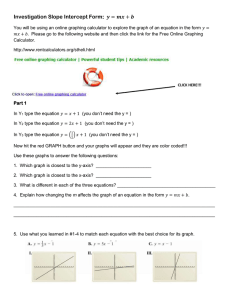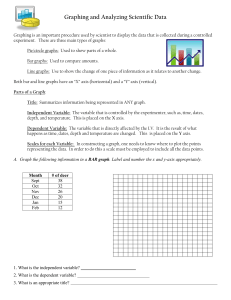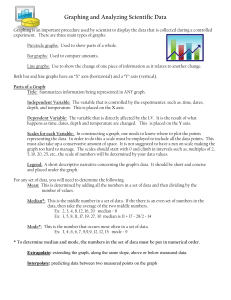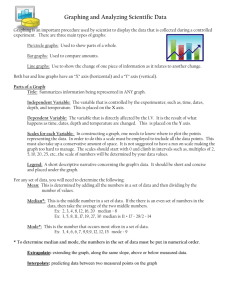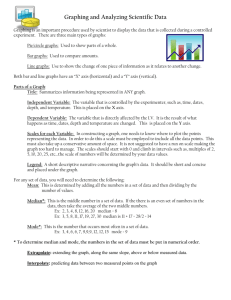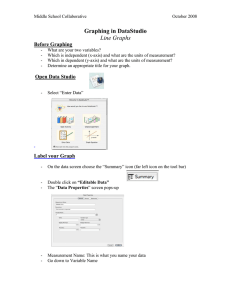Graphing 101
advertisement
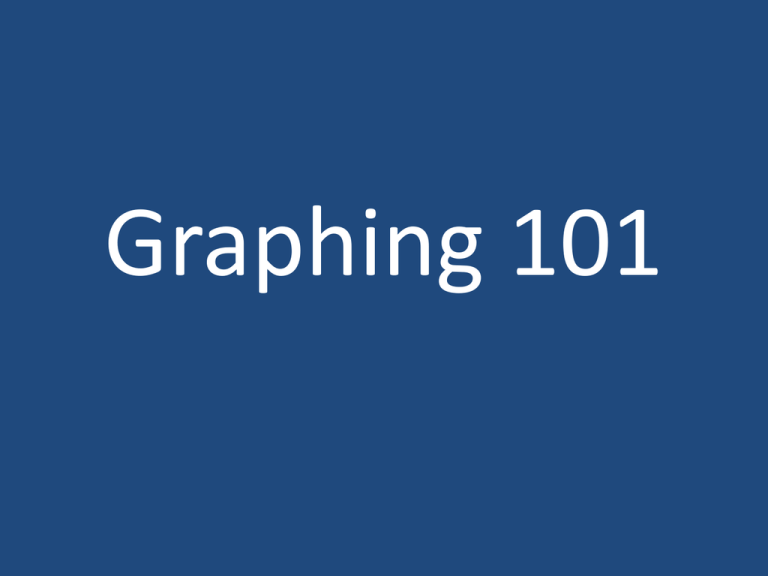
Graphing 101 Graphing basics • Use: graph paper a ruler a pencil (be neat) • Connect data points using a line or curve of best fit Setting up a graph DRY Dependent or Resultant variable on the Y-axis MIX Manipulated or Independent variable on the X-axis Labeling graphs • X and Y axis - what was measured & (unit of measurement) • First data point - on, or one line in from, the y-axis • Descriptive title - states what is on both axes – You can use “dependent variable vs. independent variable” Plan intervals • Space equally • Determine total range of numbers – divide by the number of lines on your axis, then round up to the closest number that is easy to work with Types of graphs • Line graph: graphing change over time • Bar graph: comparing data of different groups • Pie chart: comparing parts of a whole (% that add to 100) US population by state • Other types Set up a graph for each and include ALL graphing requirements. If appropriate, add a line that predicts what the data would look like. • Average monthly temperature in RI over 12 months • Types of birds at a bird feeder in December – chickadee (35%), mourning dove (10%), blue jay (40%), nuthatch (5%), cardinal (10%) • Polar bear population over the past 20 years

